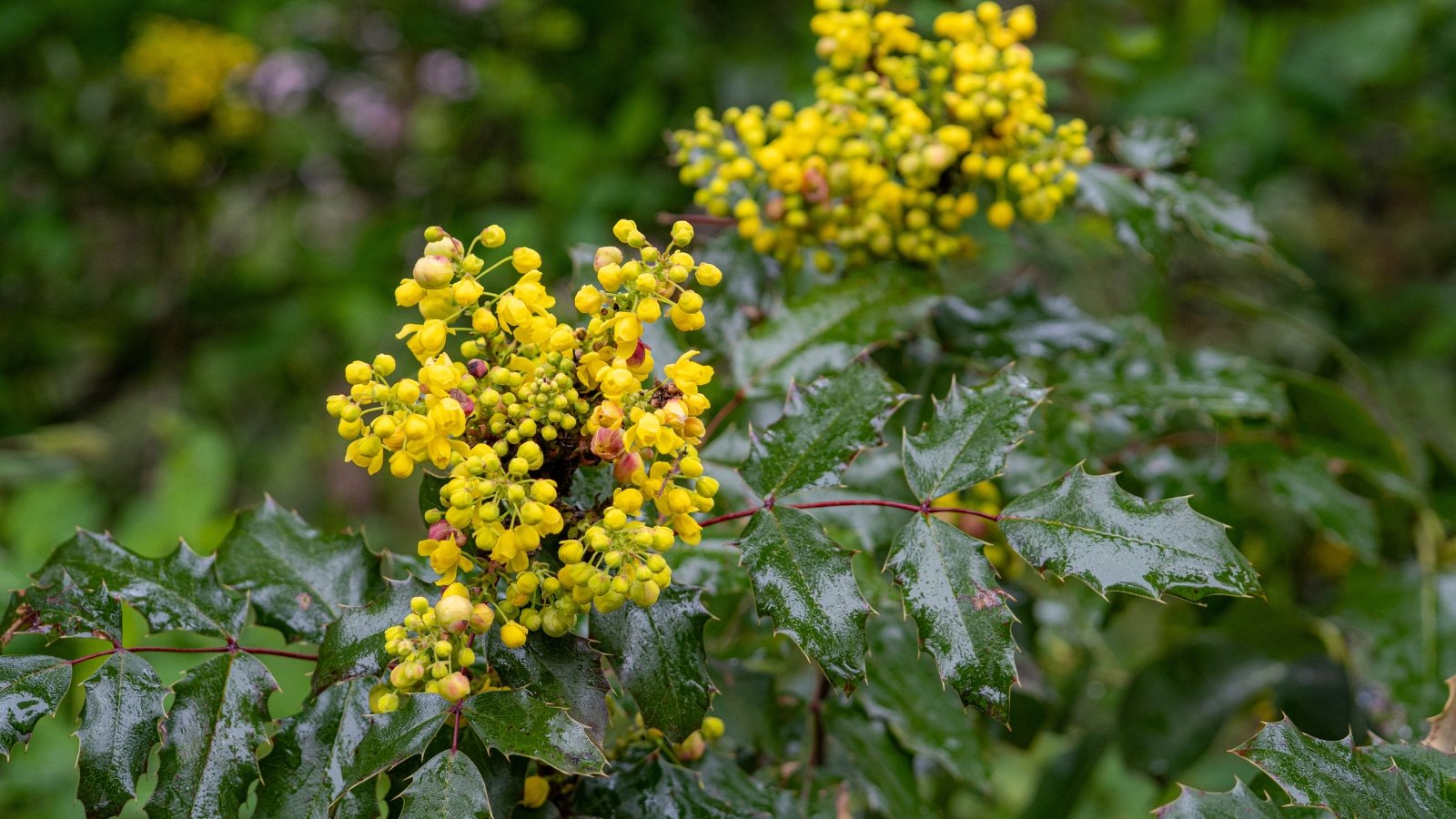Hanging baskets are a great way to add color and interest to your home in summer. Whether you hang them under a porch, from a shepherd’s hook, or fence, these planters are sure to add some pizazz. But in the heat of summer, some plants may start to wither and become stressed.
With constant sun and wind exposure, hanging baskets are notorious for drying out fast. Much faster than in-ground plantings and perhaps even faster than in containers. For this reason, it’s important to fill hanging baskets with resilient plants that can handle the heat.
While these plants look great in hanging baskets and will hold up during even the hottest days of summer, they’ll still likely need a mid-summer cleanup. Remember to plant for the environment you have, not the one you imagine at the plant nursery. For example – Boston ferns look beautiful on a shady porch but will fry in direct sun. The most common challenge I’ve observed with hanging baskets is providing them with enough water. They tend to dry out even faster than containers.
When determining if my hanging baskets need water, I like to gently lift the basket on the hanger and feel by weight. Dry soil will be extremely lightweight, while moist soil will be significantly heavier. As you water your hanging baskets, take note of their weight before and after watering. I check for water this way instead of feeling the soil because the soil surface can be misleading. Sometimes, a rain shower leaves the top of the soil moist, but it hasn’t rained enough to truly penetrate the soil to the roots of the plant.
If you’re shopping for a pre-filled hanging basket at the nursery, you’ll likely find a mix of plants crammed into one container. Some of these plants may do well, while others may wilt under summer stress. Premade hanging baskets are also expensive! Try filling your hanging basket with one or a few of these heat-loving plants to make sure your plants thrive all summer long!
Trailing Rosemary
If you love the smell and flavor of rosemary, try planting trailing rosemary in full-sun hanging baskets. This rosemary cultivar cascades down hanging baskets and containers and blooms throughout summer with tiny blue flowers. If you have a space to hang this plant near your veggie garden, this is a great pollinator plant to attract hummingbirds and bees. Rosemary’s strong fragrance repels pests like mosquitos, slugs, and cabbage loopers, so it would be ideal near an outdoor patio.
Rosemary is remarkably easy to care for. Its only requirement is lots and lots of direct sun. This plant is drought-tolerant and prefers moderate humidity—too much humidity leads to powdery mildew. In hot climates where temperatures regularly climb over 90°F (32°C), move this plant to an area in partial shade instead of direct sun.
Trailing Lantana
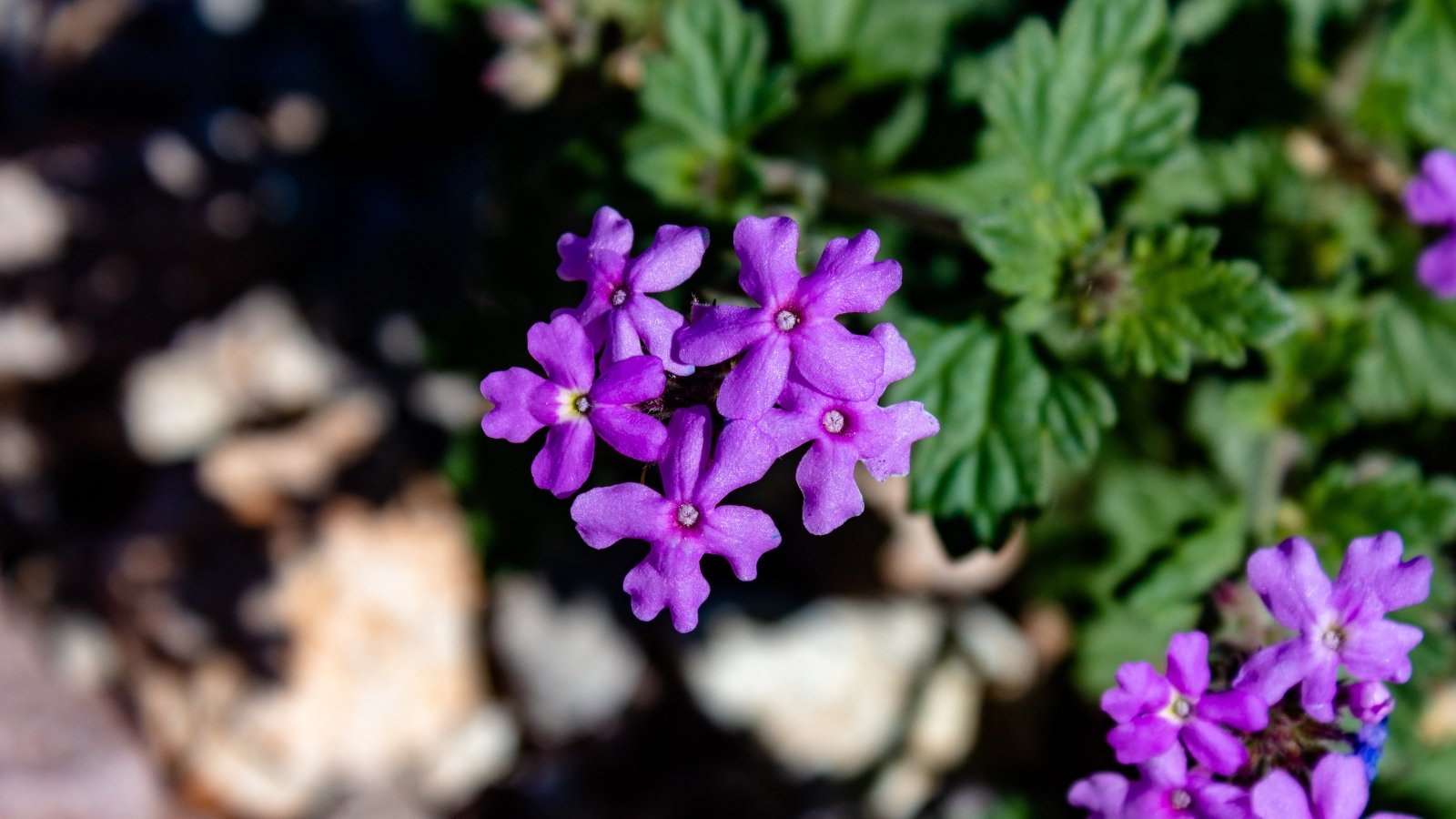
Lantana is one of the toughest summer plants, tolerant to both drought and heat. Trailing lantana hangs over baskets and containers, with white and purple blooms on branches growing up to a foot long. Lantana’s fragrance draws pollinators like butterflies and bees. Some describe the scent of lantana as sweet and citrusy, but others describe it as musty and foul.
Native to South America, lantana is an annual in much of the U.S. but is perennial in USDA zones 8-10, where temperatures are generally mild to warm. Once established, lantana plants are remarkably drought-tolerant. While this is a relatively low-maintenance plant, deadheading will help to produce the most blooms. In extremely hot places, lantana can tolerate partial sun but won’t bloom as profusely as it will in full sun.
Note: Take care if you live in a very tropical place – Lantana montevidensis and Lantana camara are invasive in Hawaii, Florida, Texas, and other warm climates. Opt for a native verbena or a native Lantana instead if there is one in your region.
Burro’s Tail
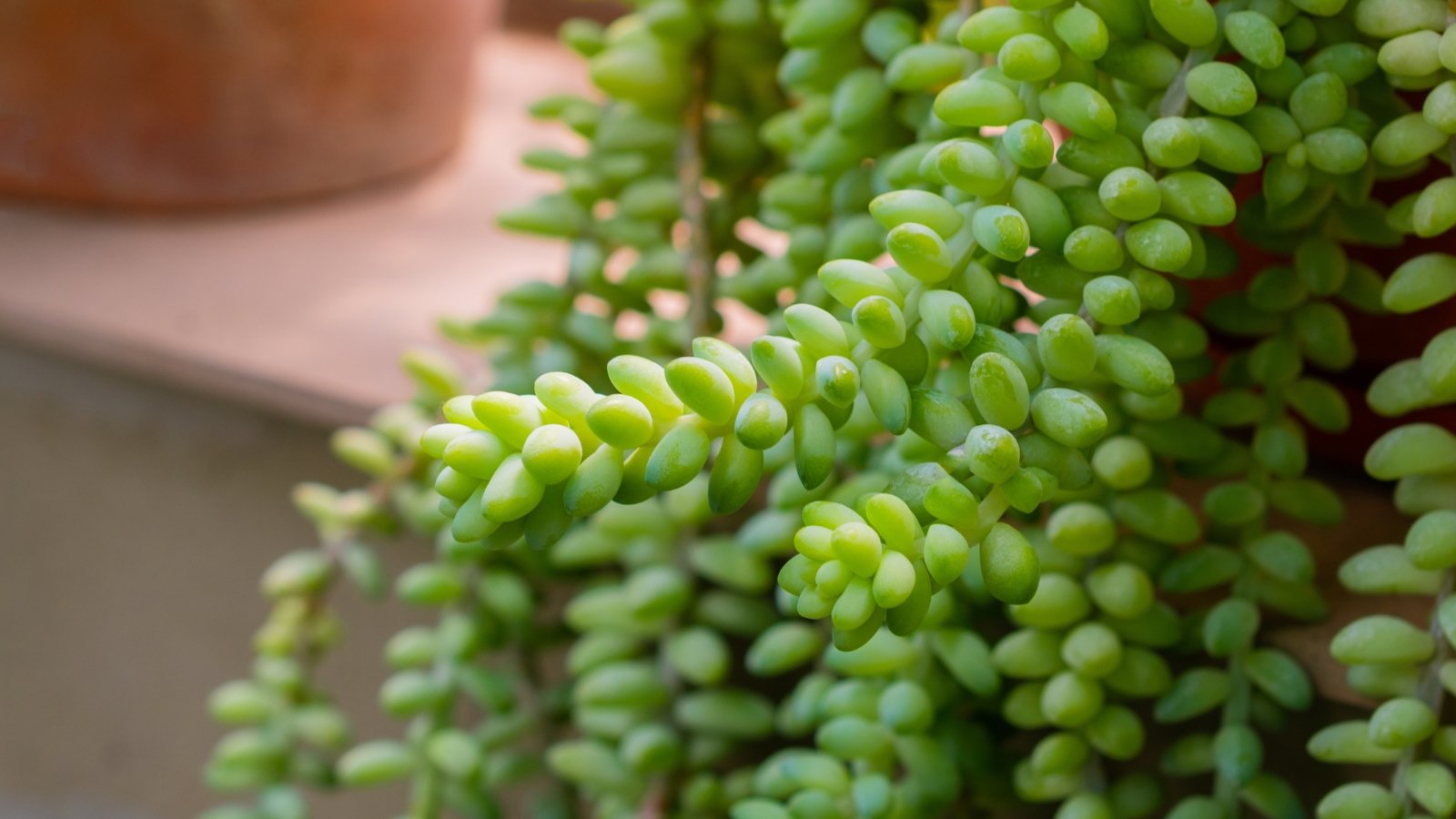
Also known as donkey’s tail, Sedum morganianum is an exceptionally cool plant for hanging baskets. Its delicate, succulent leaves grow on long, draping stems and hang in thick masses from baskets and containers. Burro’s tail has bluish-grey, delicate succulent leaves that are quick to fall off from even a slight brush, so be careful! The plant blooms with small pinkish-purple flowers at the tips of its stems in spring and summer.
Native to southern Mexico and the Dominican Republic, this trailing sedum needs hot and dry conditions to thrive. The burro’s tail plant only needs some shade, as too much direct sun will cause the leaves to singe. In USDA zones 10 through 11, this plant can stay outside year-round. In colder areas, move this plant indoors for winter.
Moss Rose
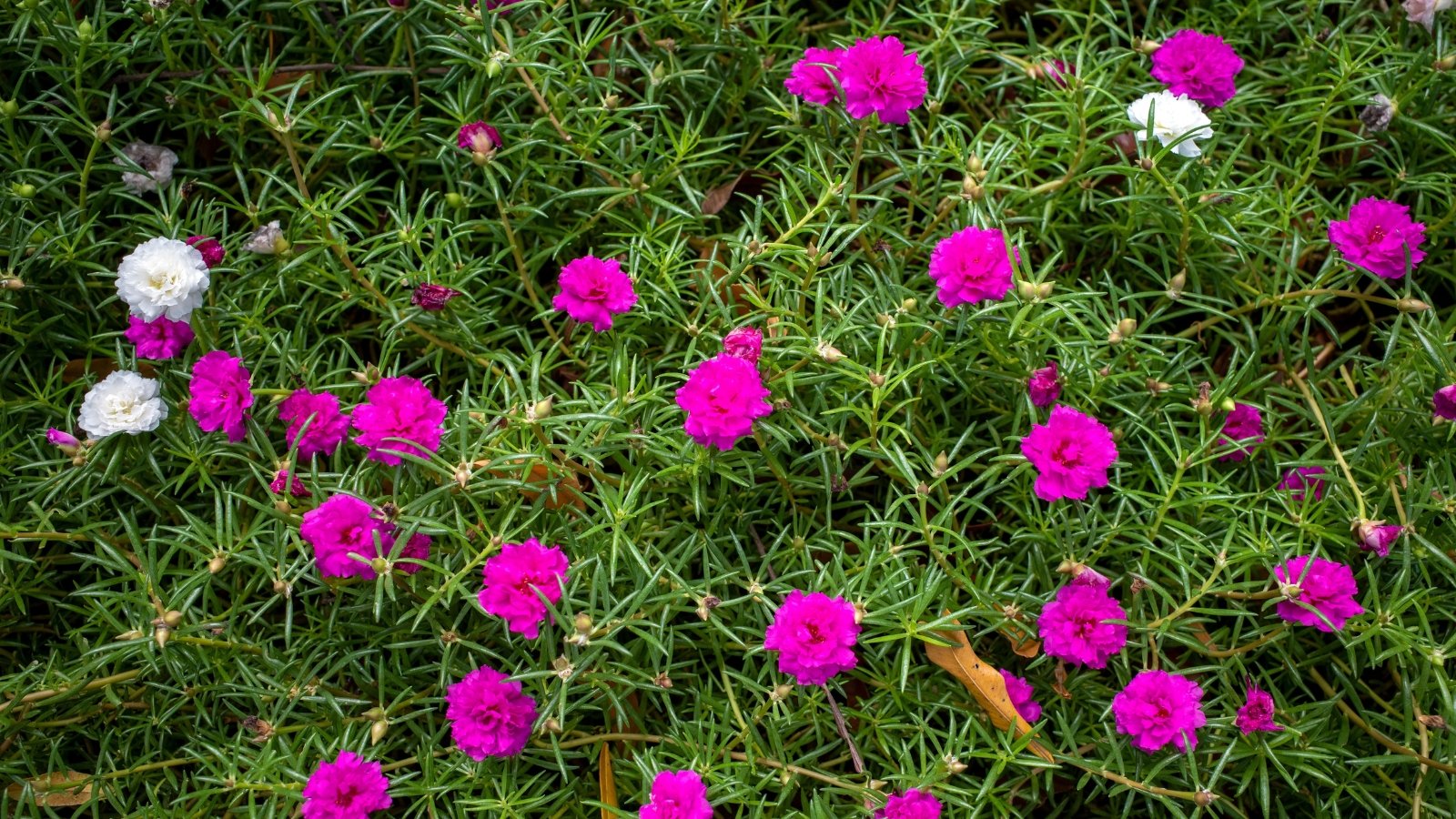
Named for its low-growing habit and rose-like blooms, the moss rose is a low-maintenance heat-loving plant. Their blooms come in ruffled single, semi-double, and double forms in a rainbow of colors. Portulaca grandiflora is great for hanging baskets because of its heat and drought tolerance. You won’t need to baby this one, except for deadheading to produce more blooms.
The moss rose is a common annual but is perennial in warmer climates. These plants grow best in a succulent mix and in an area that bakes under direct sunlight. Like all succulents, the moss rose needs a very well-draining soil. For a beautiful, low-maintenance hanging basket plant, this is about as good as it gets!
Trailing Ice Plant
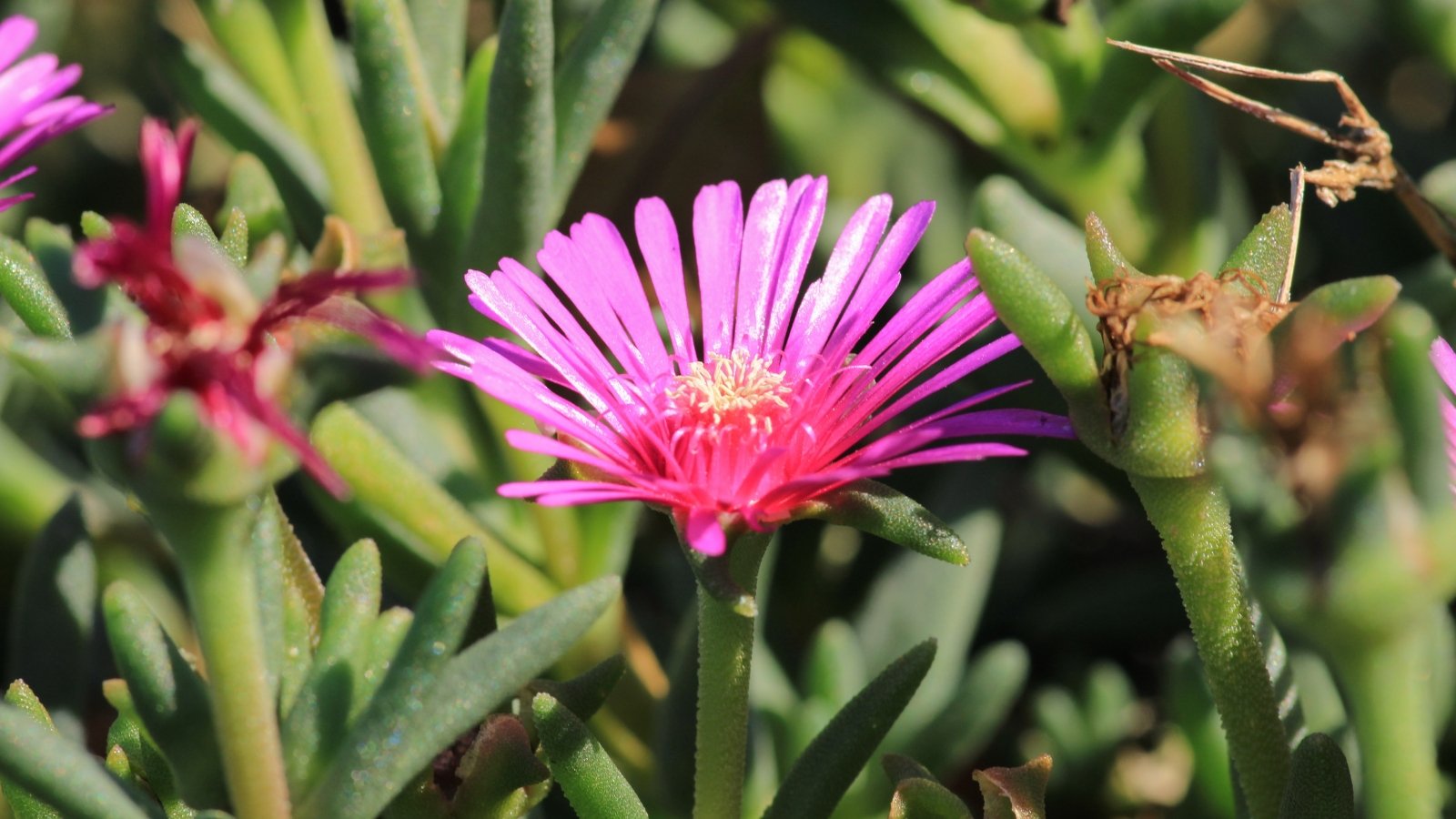
Lampranthus spectabilis is just one of many plants in the ice plant family. Ice plants are groundcover succulents with showy flowers, popular for xeriscapes and rock gardens. When in bloom, this plant produces thick masses of purple, red, or pink flowers that look great draping over hanging baskets or as a groundcover. This species is drought-tolerant and salt-tolerant, making it a great low-maintenance option for a beach house. It’s a favorite plant for butterflies, too!
Delosperma cooperi is another common plant in the ice plant family and is hardy to zone 6, while Lampranthus spectabilis is only hardy to zone 8. California gardeners, be sure to note botanical names. The highly invasive genus Carpobrotus, also known as pigface, is sometimes sold under the name ice plant.
Calibrachoa
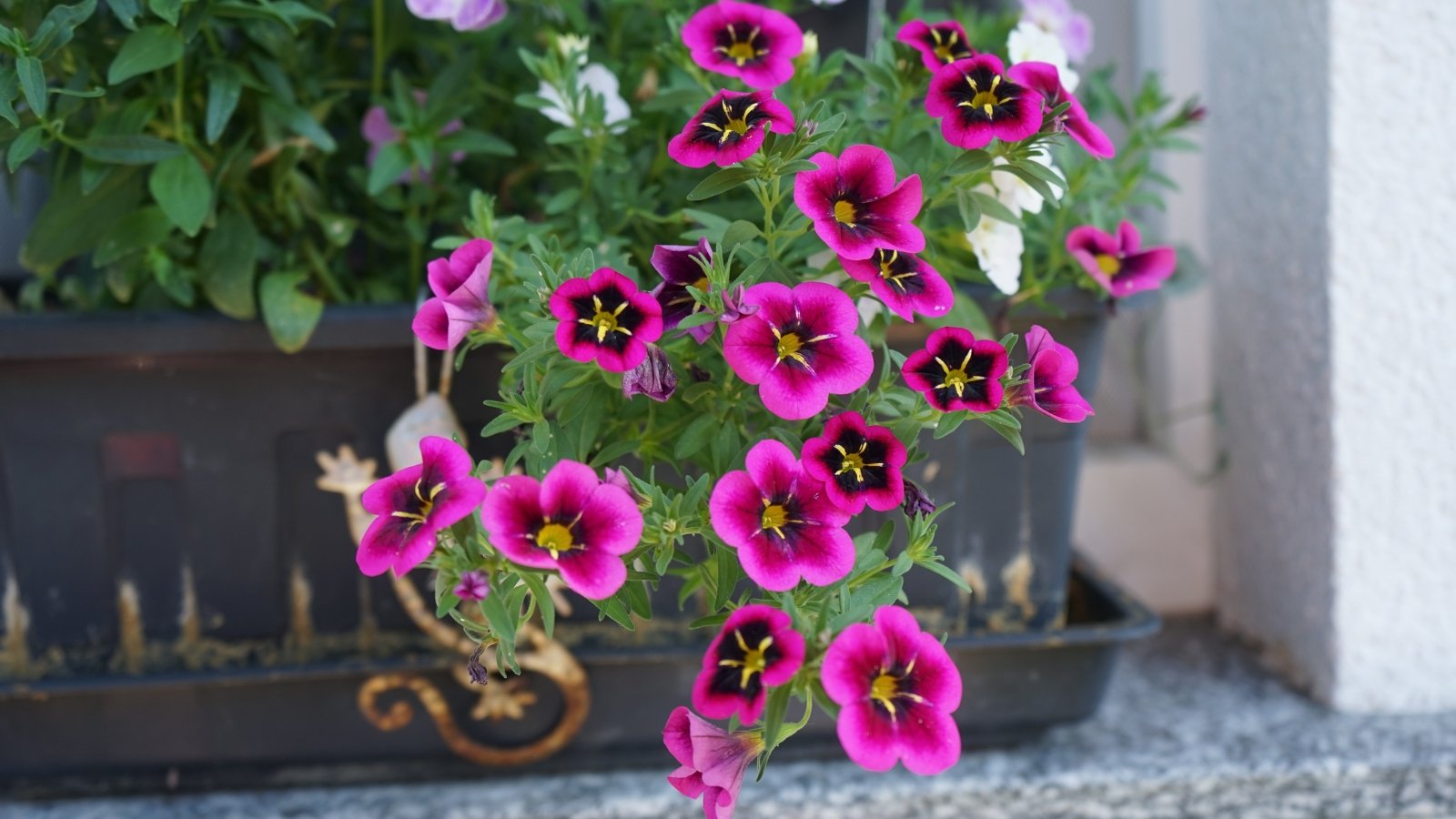
Also known as million bells or trailing petunia, this little plant is tough as nails despite its delicate flowers. They come in a million colors, too! With shades ranging from yellow to red to purple to classic white and everything in between, there is something for every hanging basket. Whether you mix and match them or stick with one color, calibrachoas are beautiful in hanging baskets.
Heat is the name of the game for these plants. They don’t like temperatures below 60°F (16°C) and thrive in hot temperatures and full, direct sun. When the weather heats up, they need regular watering, but they like to dry out between waterings, so always check first. Calibrachoas are closely related to petunias and make a great pair. In fact, there’s even a hybrid of the two known as petchoa.
Petunia
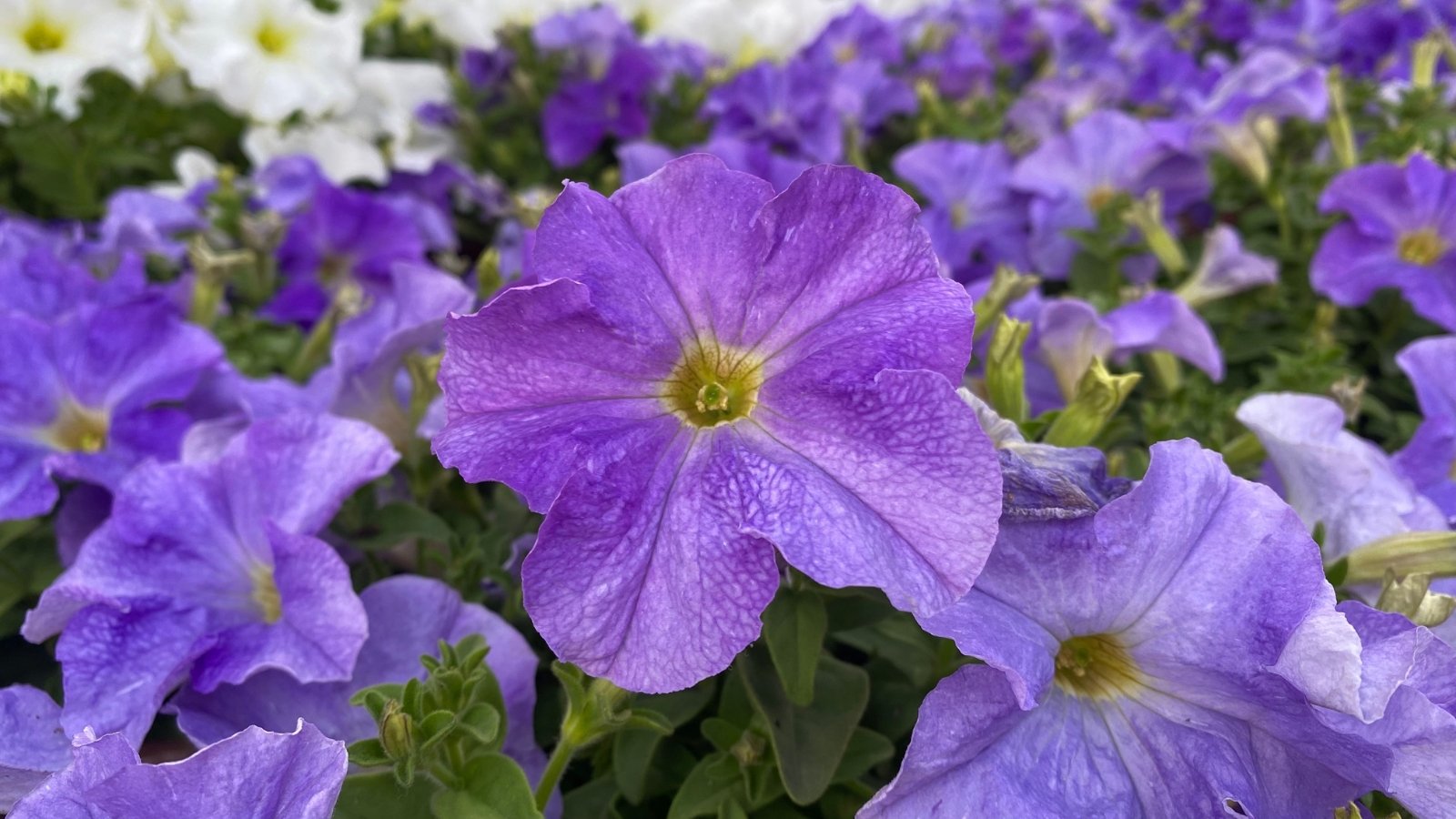
Along with calibrachoas, petunias are the quintessential low-maintenance summer annual. They come in just about every color of the rainbow and look beautiful on their own or with other summer annuals. However, there are a few extra things to keep in mind when growing petunias in hanging baskets. Petunias generally benefit from deadheading, which is difficult and time-consuming with hanging baskets. For this reason, self-cleaning Wave and Supertunia varieties are best for these hard-to-reach containers.
Like their relative calibrachoa, petunias need full sun and well-draining soil to thrive. They’re heavy feeders and need regular fertilization. Liquid fertilizers may create foliage burn, so I recommend diluting heavily or using a slow-release fertilizer. One thing petunias cannot stand is wet feet. Allow them to dry out in between waterings, and always check the soil first.
Dwarf Morning Glory
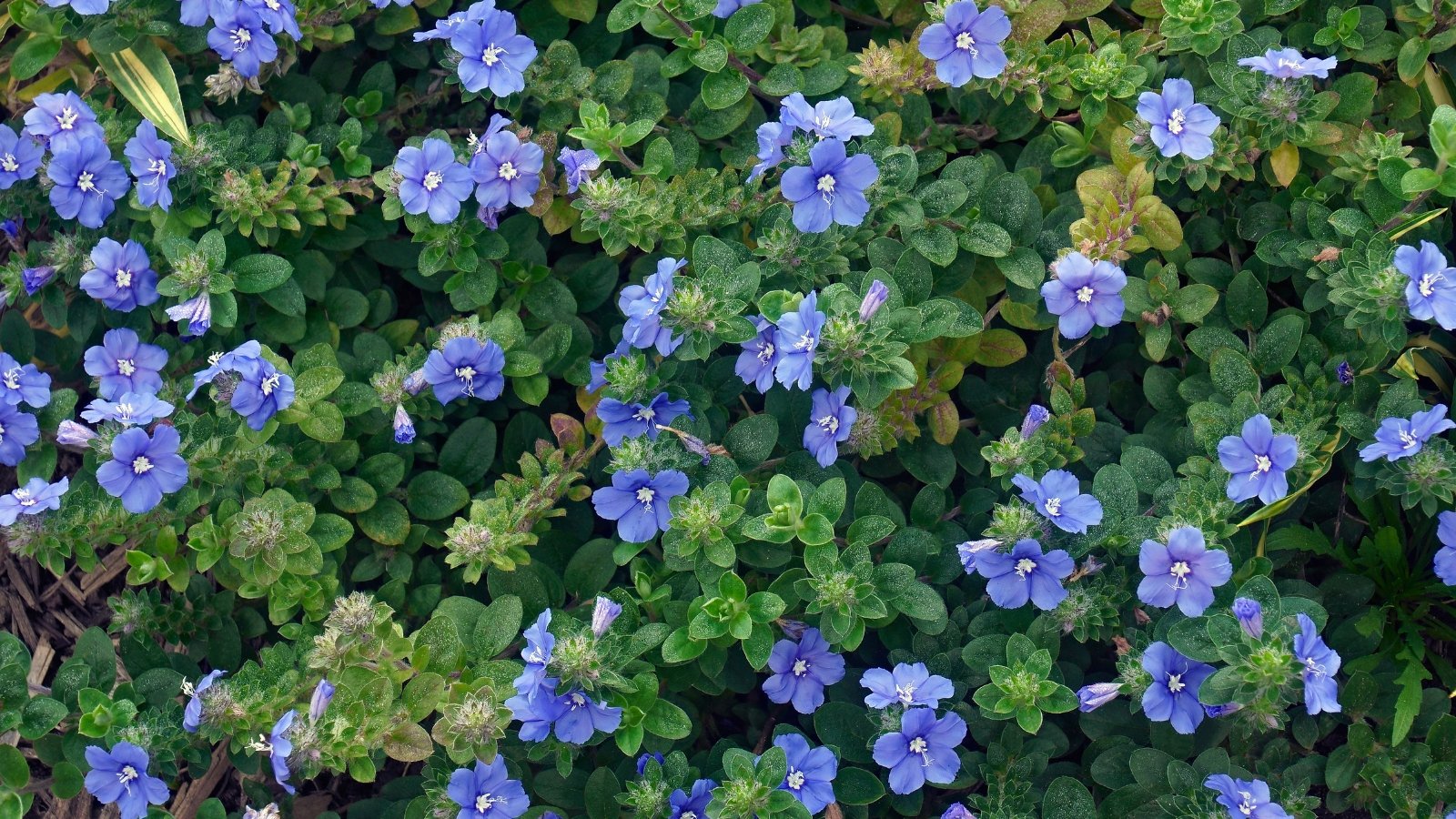
Blue is an oddly difficult color to find in flowers. Not purple, not bluish-purple, but solid indigo blue. But if you want blue flowers, you’ve got it with Evolvulus glomeratus. This beautiful plant grows in a vining habit that looks fantastic as a groundcover or tumbling over hanging baskets. They bloom from the beginning of summer until the first frost with two-inch trumpet-shaped blue flowers.
The dwarf morning glory isn’t quite as popular as other annuals, but in my opinion – it should be! In zones 8-11, it’s a tender perennial and is an annual in the rest of the U.S. This plant is drought-tolerant once established and is tolerant of a variety of soils. They need full sun and love hot summer temperatures.
Sweet Potato Vine
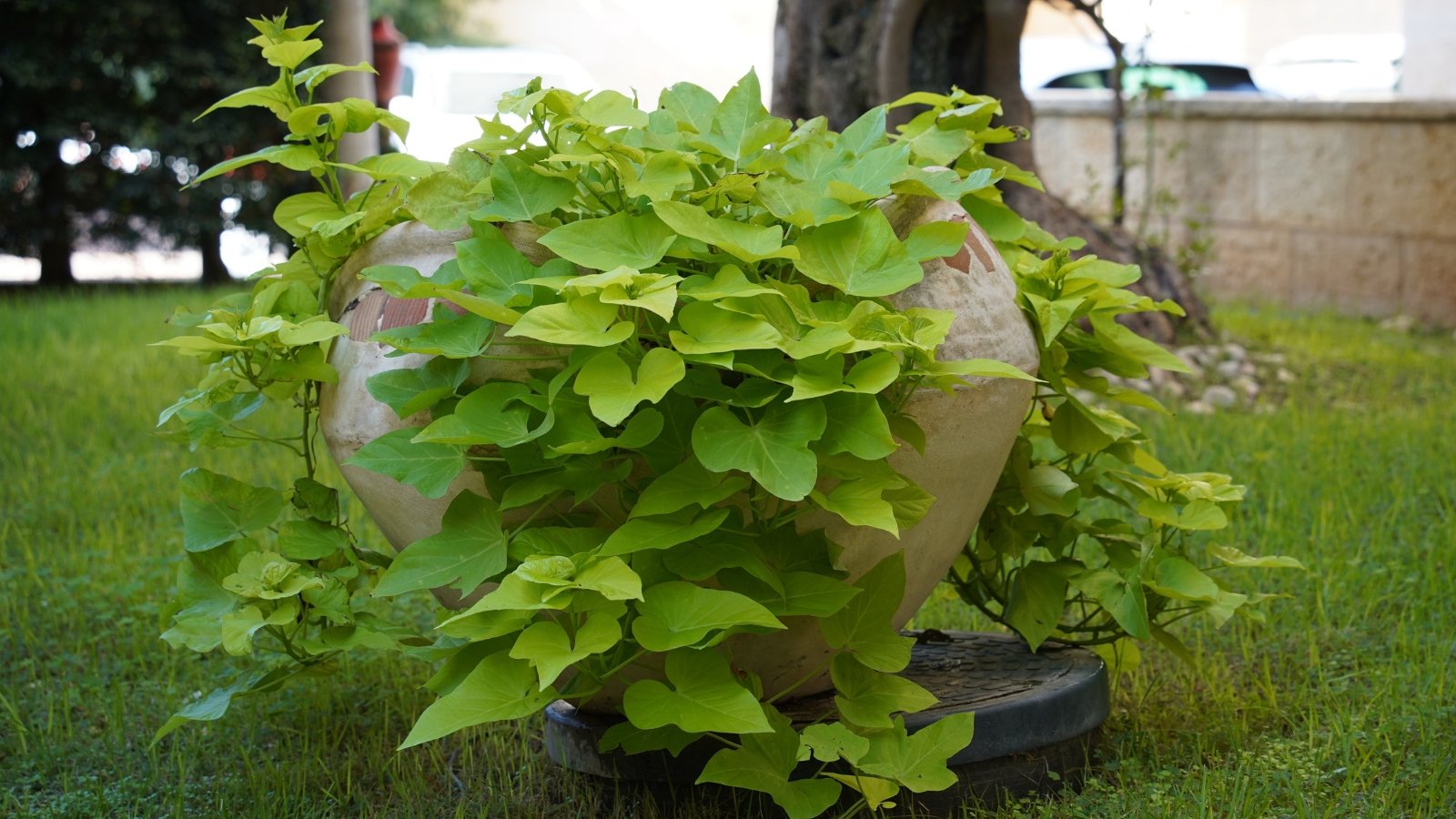
The sweet potato vine makes the perfect sidekick for any hanging basket arrangement and even attracts bees and butterflies. This unique ornamental vine is prized for its unique foliar colors and textures. From the nearly black ‘Blackie’ to chartreuse ‘Margarita’ to the variegated ‘Tricolor,’ there is something to complement every color scheme. This is also one of those rare plants tolerant of shade, though they do prefer full sun.
This plant is fast-growing and drought-resistant. While the sweet potato vine loves heat, temperatures over 110°F (43°C) may cause sunburn. Depending on how often temperatures climb to the extremes in your zone, they’ll need temporary or permanent protection under shade. They prefer moist, rich soil that’s neither too wet nor too dry.
‘Kent Beauty’ Ornamental Oregano
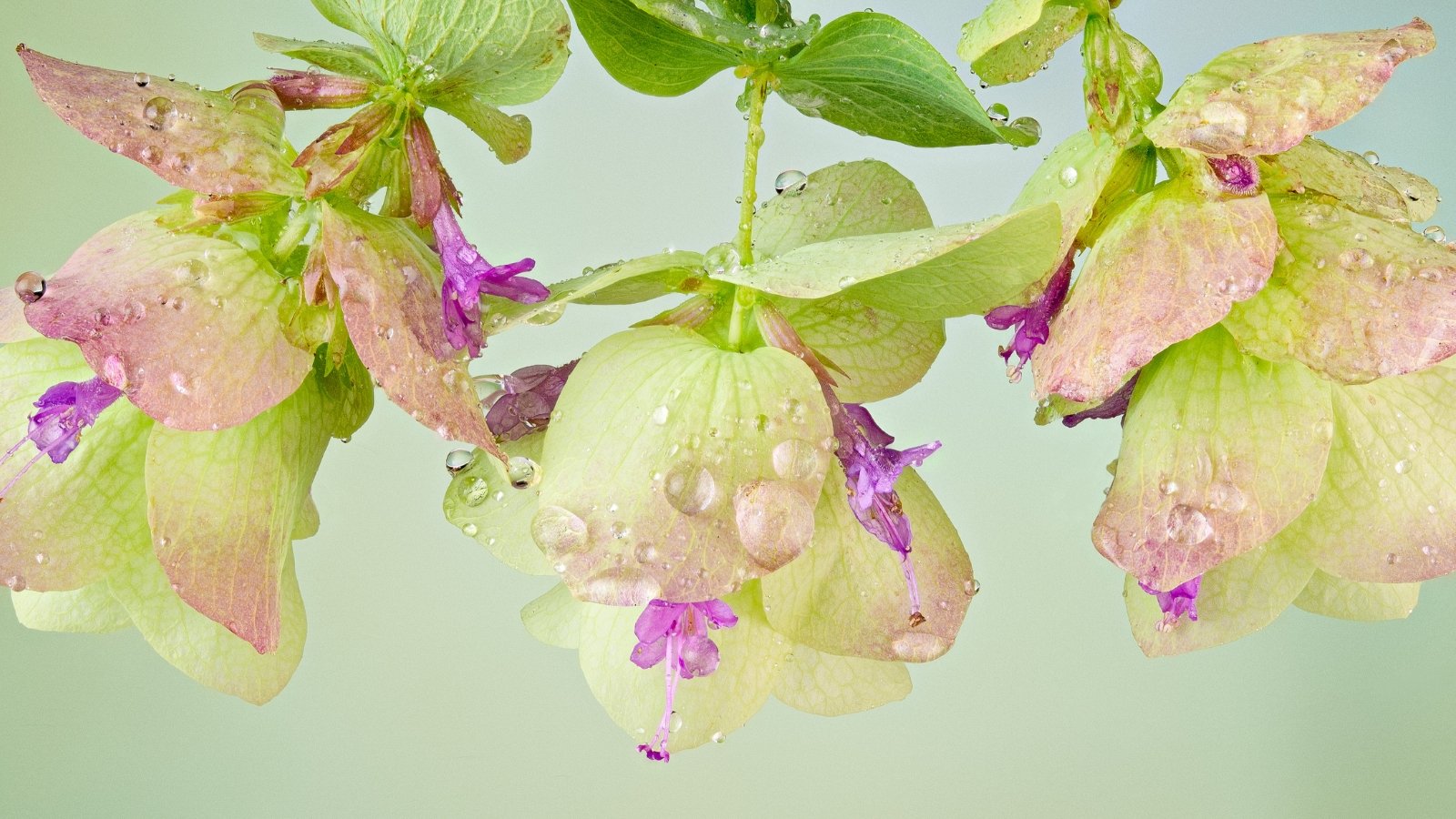
With its aromatic foliage and beautiful, blushing bracts, ‘Kent Beauty’ ornamental oregano looks beautiful when draping over hanging baskets. It’s a favorite pollinator plant and while not edible, its fragrance helps to keep pests away. Bright, direct sun promotes the most blooming for this plant. ‘Kent Beauty’ blooms with tiny, insignificant flowers surrounded by blushing pink bracts.
The ideal conditions for ‘Kent Beauty’ are full, direct sunlight and a temperature range between 60 and 80°F (16-27°C). In hotter zones (zone 9 and above), high temperatures may lead to some wilting, but this is a tough plant and will bounce back after watering. Like other Mediterranean herbs, ornamental oregano thrives in hot conditions with well-draining soil and is resistant to drought.
‘Silver Falls’ Dichondra
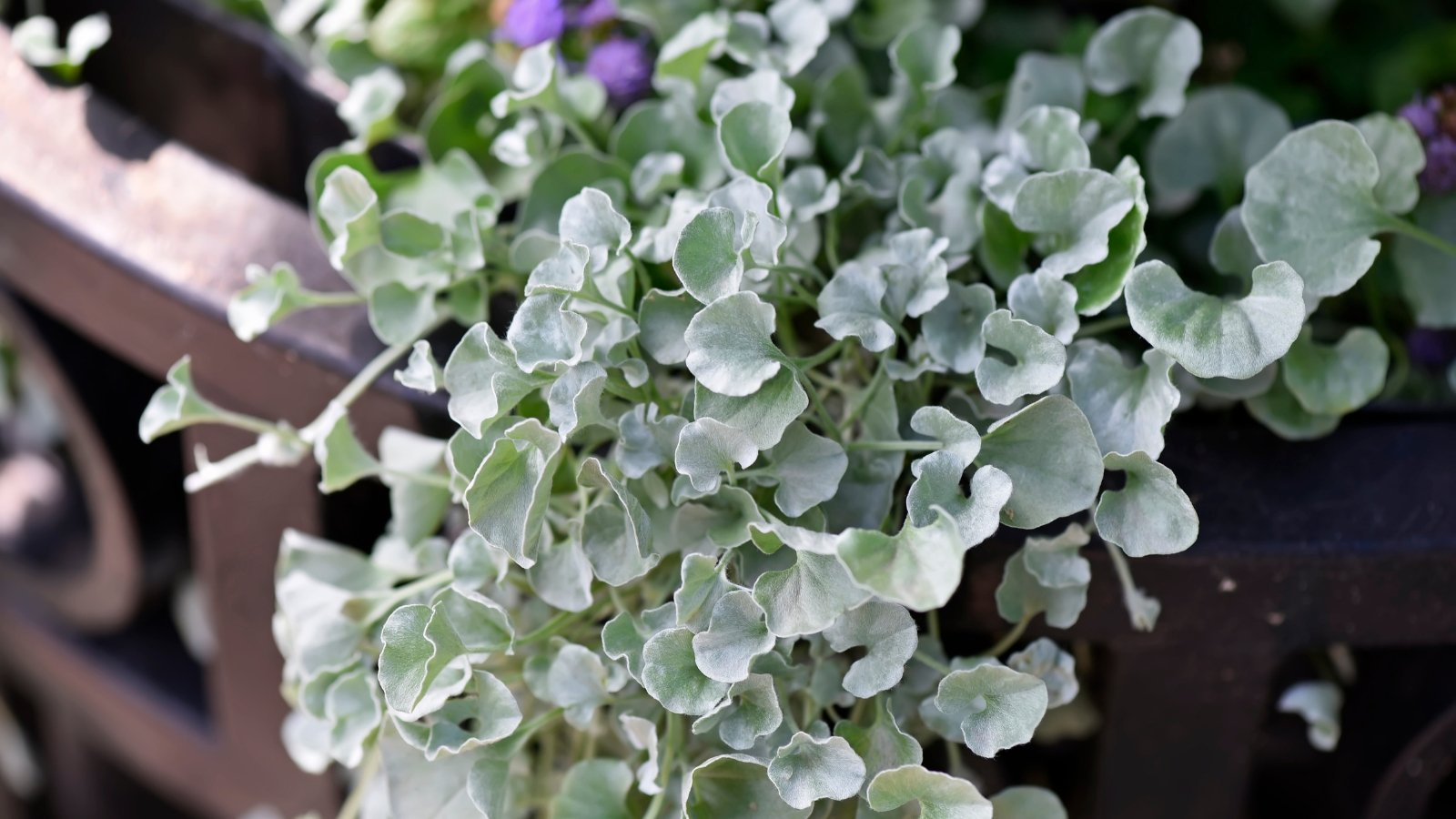
I saved the best for last. The dramatic grey tendrils of ‘Silver Falls’ Dichondra argentea are nothing short of stunning when cascading over hanging baskets. Their vines grow up to six feet long, but you can easily trim them if the Rapunzel vibe isn’t quite your style. The silvery sheen of their leaves works as a neutral color that pairs with bright annuals or with whites and blacks for an elegant look. Personally, I’d love to see this plant next to a black sweet potato vine!
This is a very low-maintenance plant. Start it from seed about three months before your last frost date or buy a start from the nursery. While this is a full-sun plant, it’s tolerant of some dappled shade from trees. It’s drought-resistant and prefers to dry out between waterings—wet feet will quickly lead to root rot. Dichondra argentea is fast growing and will soon elegantly drape over any container it’s in.
Final Thoughts
With these heat-loving plants, heat stress is one thing you can take out of the equation! By planting these heat lovers in your hanging baskets, you’ll save money and have peace of mind by knowing your hanging baskets will still look great even after a record heatwave with the proper care.



